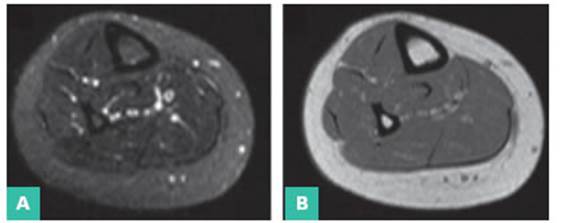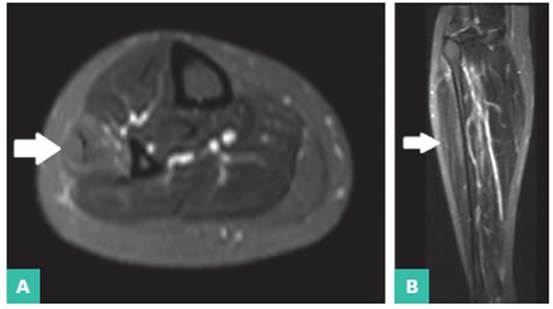A 17-year-old woman with pain and bulging in the right leg after physical exercises -bodybuilding- in the last three months, especially in the lateral part of the leg. Pain improved with rest. She denied other diseases, previous surgery, or trauma; physical examination was normal. According to the anamnesis, the hypothesis of chronic exertional compartment syndrome (CECS) was raised. The magnetic resonance imaging (MRI) of the right leg before exercise was normal (Fig. 1). After walk ing three kilometers and climbing stairs another MRI was performed, which showed a high signal on T2 STIR weighted-image with mild convexity of the edges of the peroneal muscles, a characteristic image of CECS (Fig. 2, white arrow). The patient was forwarded to the ortho pedist for fasciotomy. One week after surgery she was asymptomatic. CECS is a condition in which exercise induces high pressure within a close space bounded by bone or fascia leading to decreased tissue perfusion and pain. Excessive exercise, especially running, has been linked to increased incidence. Careful anamnesis is key to making the diagnosis. Management of this disease is either conservative (avoidance of precipitating activ ity) or surgical (fasciotomy), which is the treatment of choice.
















